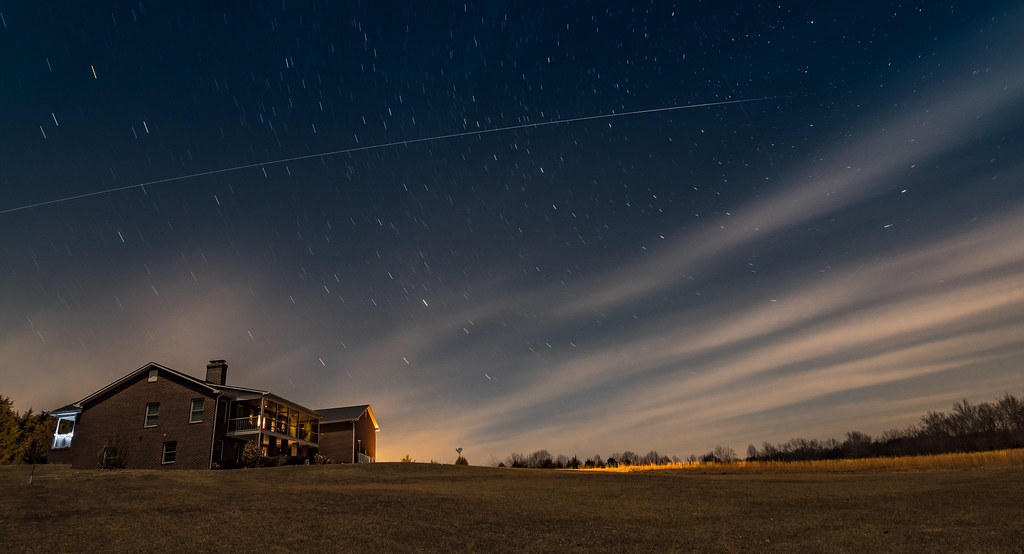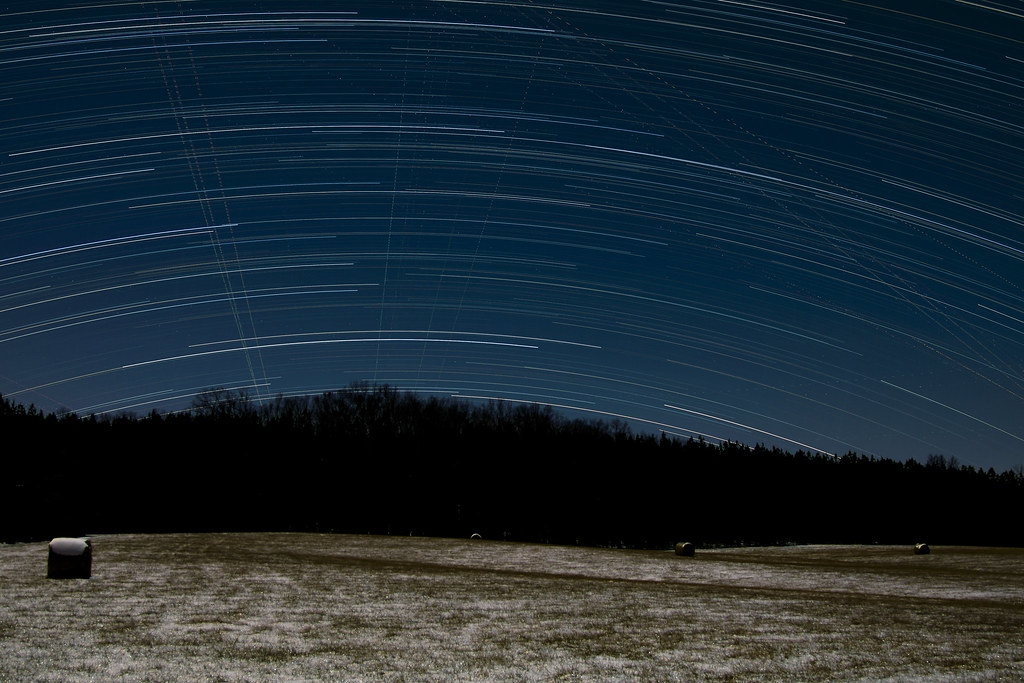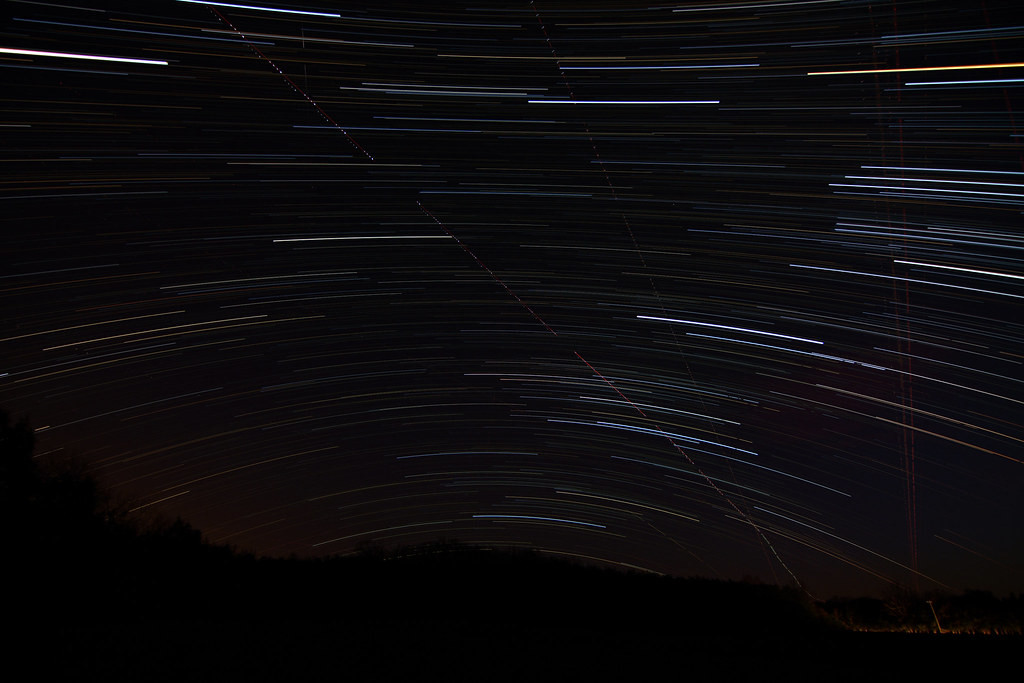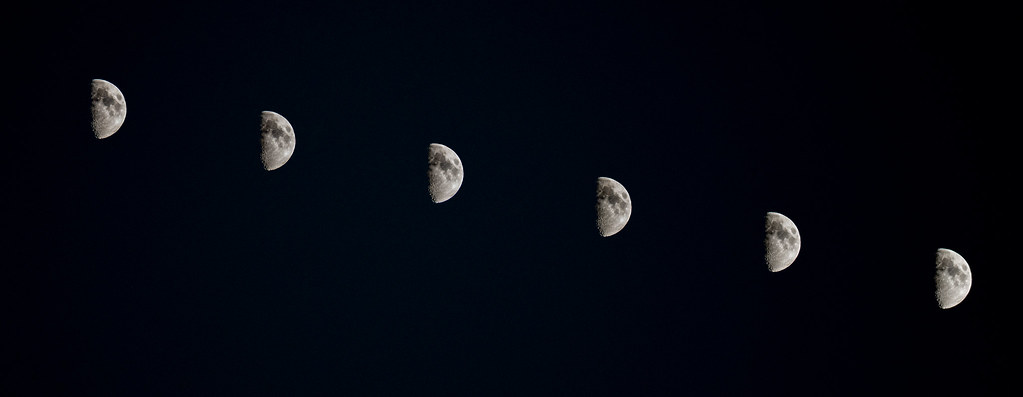You need to ask yourself, "Do I want a picture of the moon? Or do I want a long-exposure shot at night?"
Because you can't have both. Well, you can, but then you end up with what you got there. You're blowing out the moon, and clipping the data. There's really no way to get a long-exposure pic of something like the moon without it looking like a light-sabre arc without using some kind of neutral density filter.
The moon is a very bright object. Exposure-wise, you don't think about it as if you're shooting a dark object, just use normal settings. Like you're shooting in daylight.
This one is 500mm, f/5.6, 1/100, ISO 100.
 Moon 20201120
Moon 20201120 by
FredMan, on Flickr
Now, don't get me wrong. Long night exposures are way cool, but not with this bright-ass welding-arc moon trail. You need a dark sky. Then, you can capture the ISS flying across the sky, as an arc. This one is 240 seconds.
 ISS Transit 20180126
ISS Transit 20180126 by
FredMan, on Flickr
If you want something like great star trails, drawing circles across the sky, you're going to need to not only take long exposures, you're going to need to take a bunch of them and combine them by stacking. Thew multiple exposures and stacking is critical here; long exposures create a whole crap-ton of sensor noise. Just the nature of the beast. In-camera long-exposure NR is time consuming (it essentially takes a "dark frame" of equal exposure and then subtracts the noise in the dark frame from the image). And if you're shooting for trails long gaps in the sequence from in-camera NR is going to lead to long gaps in the trails. Once you've shot a bunch of frames, stack, and process, you get something like this:
 Snowy Startrails
Snowy Startrails by
FredMan, on Flickr
And don't always aim for the North Star, star trails pics can show some cool stuff when pointed in other directions. This is looking almost due south:
 Edit
Edit by
FredMan, on Flickr
Here's another one in the same direction, but with a wider lens. Really shows off the distortion wide-angle lenses give to the frame.
 Rocky Knoll StarStack 2016-03-28b
Rocky Knoll StarStack 2016-03-28b by
FredMan, on Flickr
The other thing to think about is that the moon MOVES. Like really fast, even if you can't see it. Which means you need to think about the
500 Rule, which says that to avoid "trails" when shooting long exposures, your max shutter should be about your focal length divided by 500. So, for a 100mm lens, your max exposure should be around 5 seconds.
Here's how much it moves every 6 minutes (and this was shot with the intervalometer, then stacked)
 Moon 120mm Transit 6 minute Interval
Moon 120mm Transit 6 minute Interval by
FredMan, on Flickr
The sun also hauls ass, as seen in this combined sun and moon shot at 5 minute intervals.
 Front Field Sun Moon Set_5-Minute
Front Field Sun Moon Set_5-Minute by
FredMan, on Flickr
Intervalometers are easy to use, most mid-tier and up camera bodies have them built in.
Now, if you want to get something cool like, say, the ISS transiting the sun or the moon, you're going to need two things: A long lens, and a bunch of frames. And then you're going to need to process/crop/etc the individual frames and then stack then in something like Photoshop. The big PITA about stacking is, well, you need to be precise. You can't hack it and say "good enough", because then instead of a nice sharp moon and a nice sharp ISS, you're going to get this horrendous blurry shot that you'll trash as soon as you see it.
For this type of shot you DON'T use an intervalometer. My method is to mount the camera on a tripod, frame my subject, TURN OFF VR, brace myself as best I can, and shoot continuous high. There's a little camera motion, but not so much that the crop/stack edit process is too tedious. And your exposure is high enough (I shot this at 500mm and 1/640 second) that the physical movement of the camera during shutter-open isn't too much to blur the image.
And then you can get combined shots like this! Daytime ISS moon transits!
 ISS Lunar Transit 2021-01-23_SuperCrop
ISS Lunar Transit 2021-01-23_SuperCrop by
FredMan, on Flickr
And get your hands on a solar filter (Thousand Oaks Optical, I'm looking at YOU) and you can get the same thing of the ISS and sun! 500mm, 1/200 second.
 ISS Transit 20200201 Stack_
ISS Transit 20200201 Stack_ by
FredMan, on Flickr